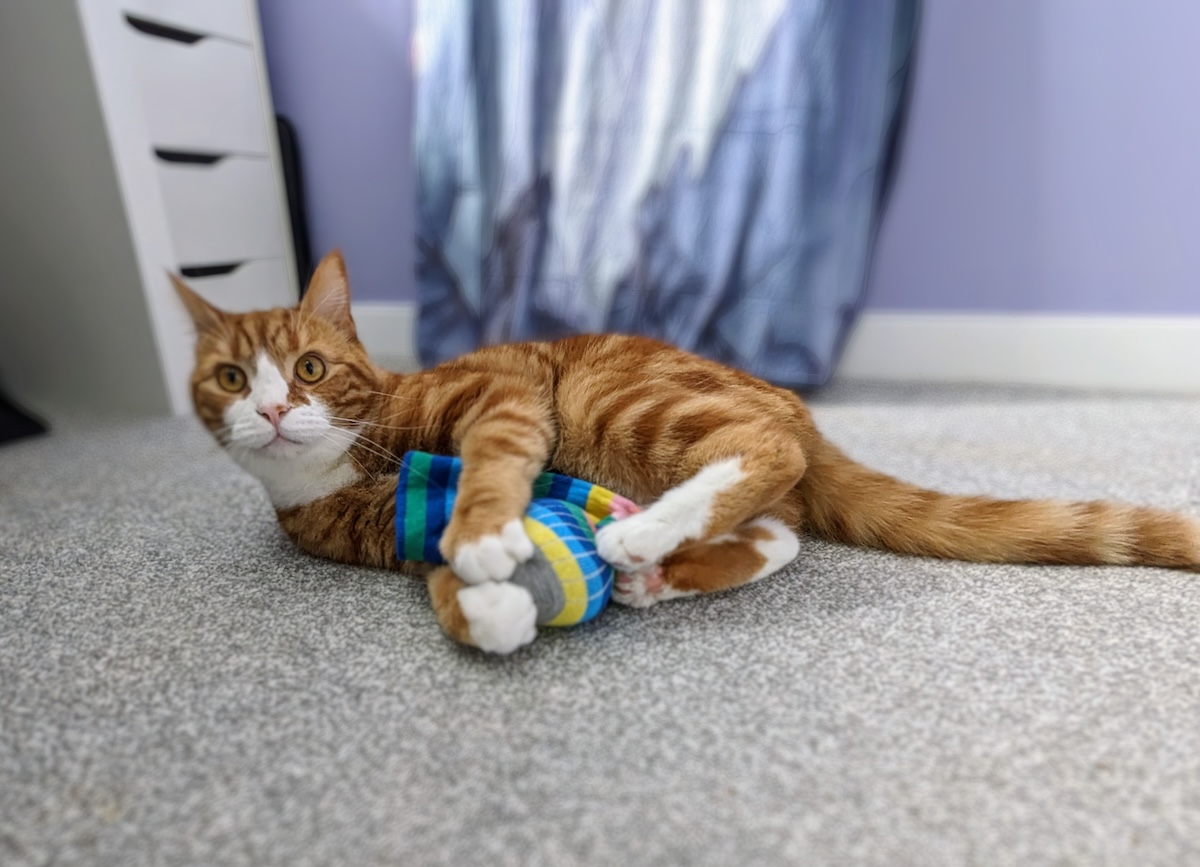
The information is current and up-to-date in accordance with the latest veterinarian research.
Learn more »
Hi, I’m Dr. Karyn! Read my introduction to learn more about me and meet my five hilarious cats: Clutch, Cyril, Alex, Zelda, and Zazzles.
With five cats ruling my house, I have very little doubt about my role. Timely provision of food, water, and entertainment is expected, but there are times that I feel a little bit like their dealer, with catnip being their drug of choice.
Statistically, only around 60% of cats respond to the intoxicating effects of catnip, and that figure is reflected in my household, with Alex, Cyril, and Zelda being both attracted to and affected by catnip; Clutch and Zazzles have no interest in the stuff. Zelda, in particular, will start meowing aggressively if it’s been several days since her last ‘fix’, and the sound of opening the catnip tub is met with equal, if not greater, enthusiasm than the sound of the food container.
Recently, I was tasked with making some homemade cat toys, and the catnip crew were only too happy to help test them out.
But as I watch the wide-eyed antics of my intoxicated felines, I can’t help wondering – am I enabling an addiction?
Nothing to see here…
The Ins and Outs of Catnip
Catnip, also known by its scientific name, Nepeta cataria, is a member of the mint family. These plants produce the chemical nepetalactone which repels insects, but appeals to many of the feline persuasion. This chemical works its way into your cat’s pleasure center by way of a particularly sensitive olfactory organ located in the roof of their mouth, called the vomeronasal organ (VMO for short). If you’ve ever noticed your cat pulling a comical grimace when they are sniffing something, this is called the Flehmen response – or as we used to call it in my house, “stinky face” – whereby they draw scents and pheromones into the VMO. From here, your cat can glean an absolute mass of information about the world around them.
One of the more important pieces of information processed by the VMO is to do with sex, like the presence of competition or the receptiveness of females. So the messages reaching your cat’s brain appear to be similar to arousal, which certainly explains the blissful response! It’s just a shame that only 60% of the cat population gets to enjoy it.
Cyril is really feeling those catnip vibes.
Can Cats OD on Catnip?
The catnip plant is not toxic to cats, but if they ingest a huge amount they may develop some unpleasant gastrointestinal side effects. I’ve never seen this in my cats.
I usually bulk buy my catnip in a 1-ounce tub, which might not sound like much, but is the equivalent of 3-4 herb jars, and it usually lasts for several months…unless the cats manage to break into the container.
Thus far, the only downside my cats have experienced to this treat is some occasional eye irritation, a consequence of rubbing their face too aggressively against the carpet!
No more catnip?
Am I Enabling Addicts?
I don’t think so. Although their ears prick up when I open the drawer containing this intoxicating treat, and the opening of the tub brings 60% of my cats to swarm excitedly around my feet, they do not spend the rest of their time looking for more, in a desperate search for their next ‘fix’. Although Zelda does get a tad demanding if she feels it’s been too long since her last dose, she is not completely consumed by her need for the ‘nip.
And if I can provide some extra amusement and enrichment in their lives, I’m absolutely going to do it. I just wish there was a way for Clutch and Zazzles to experience the same bliss I see in Zelda, Alex, and Cyril’s glassy, dilated pupils!






